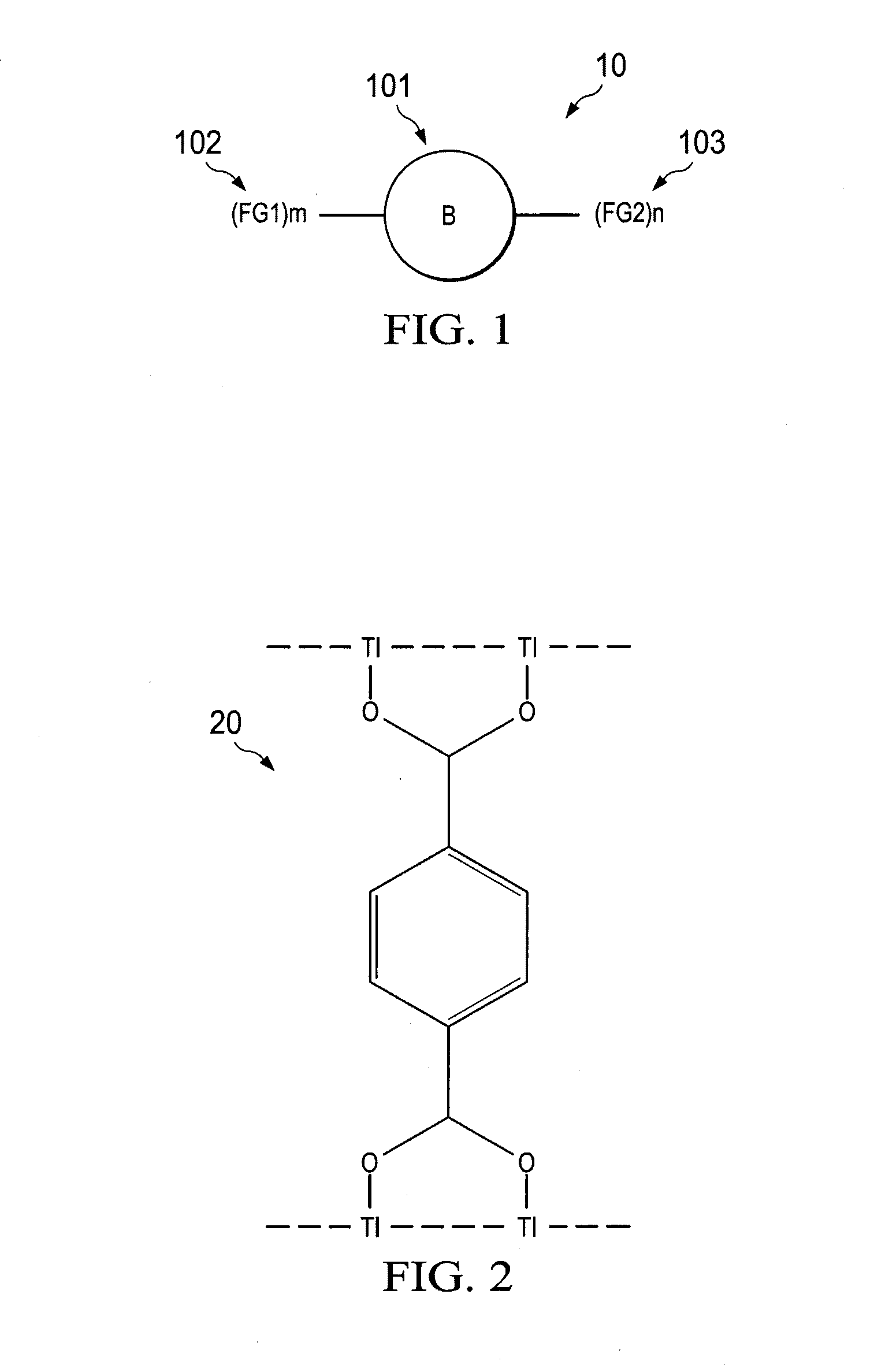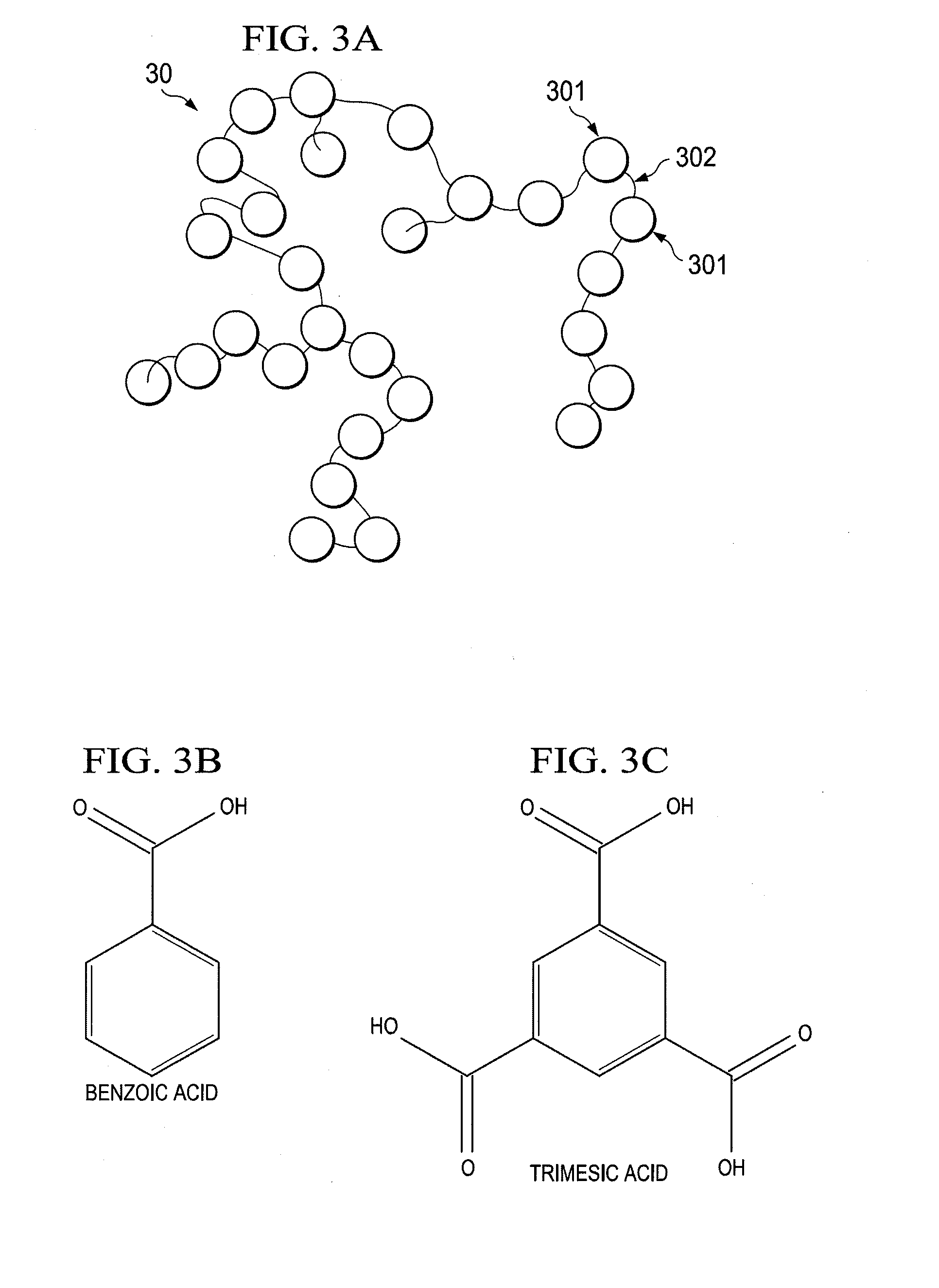Semiconductors compositions for dye-sensitized solar cells
a technology of solar cells and semiconductors, applied in the field of semiconductor compositions, can solve the problems of unusual warming of the earth's atmosphere, non-renewable energy sources of fossil fuels, etc., and achieve the effects of limiting or preventing the airborne of nanoparticles, limiting or preventing adverse environmental or health risks
- Summary
- Abstract
- Description
- Claims
- Application Information
AI Technical Summary
Benefits of technology
Problems solved by technology
Method used
Image
Examples
example 1
[0048]Particle size measurements for a nanonodular network. The following experiment was performed to demonstrate the formation of nanonodules. First, a dispersion of titanium dioxide nanoparticles was prepared by a sol-gel method. Titanium isopropoxide was added into a 0.075 M solution of nitric acid in deionized water. The dispersion was then hydrolysed by heating it to 80° C. for ten hours. The dispersion was then heated in a sealed pressure tube at 250° C. for twelve hours, which is the step by which porous nanocrystalline (primarily anatase) networks are formed. The resulting dispersion was then sonicated for ten minutes, diluted to approximately 2% solids with deionized water, and pressure filtered using a 200 nm Whatman® Nuclepore™ polycarbonate membrane filter. The filtrate (referred to below as titanium dioxide sol), which contained particles of less than 200 nm, was divided into three equal samples and then used to prepare the following.
[0049]Sample 1 was prepared by addin...
example 2
[0052]Performance of a dye-sensitized solar cell having a semiconductor with a nanondular network. This example demonstrates that, in some embodiments, adding a linking compound to form a nanonodular network does not reduce the performance of the solar cell as it would otherwise be absent the linking compound.
[0053]Two titanium dioxide based slurries were prepared as follows. A first slurry was prepared by mixing titanium dioxide nanopowder (Evonik Degussa Corporation, Aeroxide® P25 (“P25”) having an average primary particle size of 21 nm) (about 37% by weight) with water (about 62% by weight) and Triton X-100 (octylphenol ethoxylate sold by the Dow Chemical Company) (about 0.6% by weight). To this mixture was added titanium dioxide nanoparticles synthesized by a sol-gel method (see EXAMPLE 1). A second slurry was prepared the same as the first slurry, except that trimesic acid was added at 0.3% by weight of the P25 TiO2.
[0054]A layer of the first and second slurries were deposited ...
PUM
| Property | Measurement | Unit |
|---|---|---|
| average particle diameter | aaaaa | aaaaa |
| particle diameter | aaaaa | aaaaa |
| particle diameter | aaaaa | aaaaa |
Abstract
Description
Claims
Application Information
 Login to View More
Login to View More - R&D
- Intellectual Property
- Life Sciences
- Materials
- Tech Scout
- Unparalleled Data Quality
- Higher Quality Content
- 60% Fewer Hallucinations
Browse by: Latest US Patents, China's latest patents, Technical Efficacy Thesaurus, Application Domain, Technology Topic, Popular Technical Reports.
© 2025 PatSnap. All rights reserved.Legal|Privacy policy|Modern Slavery Act Transparency Statement|Sitemap|About US| Contact US: help@patsnap.com



